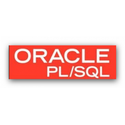
PL/SQL is short for “procedural language extensions to SQL”. Essentially, this is an extension of the structure queries language (SQL) which was developed by an Oracle company.
This language allows developers to write the code in the procedure format. It combines the SQL capability to manipulate data with the procedural language capability to create the full function SQL queries.
PL/SQL allows developers to command the compiler what to do (via SQL) and how to do this (via the procedural way).
What May PL/SQL Architecture Consist of?
- PL/SQL blocks
- PL/SQL engine
- Database server
Procedural extension of the SQL language possesses a set of advantages among which one may distinguish the followings:
- better performance as SQL is fulfilled entirely, not by the individual instructions;
- high productivity;
- full integration with SQL;
- high mobility;
- high protection level;
- maintaining the object-oriented programming.
PL/SQL may be designated as a third-generation programming language (3GL) such as Pascal and C++. It is an encapsulated SQL language. The PL/SQL language supports the complex data structure. For creating an agile development environment, there is a restore function of certain subsystems. The scope in PL/SQL is defined by the strict rules.
Understanding the principles and peculiarities of the development languages will assist the testers to more qualitatively perform software product testing of various kinds (mobile testing, desktop application checking, web application testing). Besides this, automated testing and load checking will not cause problems for the QA specialists anymore.
